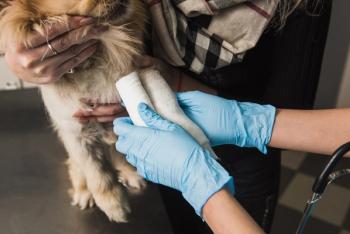
4 ways to bond clients to your emergency or specialty practice
Veterinarians in the emergency room and cancer wards can bond with clients, too. Find the warm and fuzzies in any hospital.
When I left general veterinary practice for a job as hospital administrator at an emergency and specialty group, I thought I'd lose the chance to really bond clients to our practice. We often see emergency patients only once, and specialty clients are often delivered bad news. And, of course, all of these services cost a lot more than a new-puppy visit.
But I quickly realized that bonding clients to our practice was something we could absolutely do-even without the cute spay-neuter certificates and new-pet welcome kits filled with fluffy toys. I looked at our strengths and identified ways to make our hospital stand out. Here are four ways we enhanced goodwill and fuzzy feelings at our practice:
1. Be ready before they show up
Here's a common situation in the emergency room: A client stumbles in with a hit-by-car dog. A receptionist or veterinary assistant tries to get names, phone numbers, and medical details into the computer while the dog is taken back. The owner isn't the owner at all-it's a pet sitter, and the owner's out of town. She doesn't know the name of the family veterinarian. The owner can’t be reached, it's 2 a.m. so there's no chance of getting a medical history, and the pet sitter can’t or won’t make medical decisions because she doesn't know the owner's wishes. It doesn't have to be like this.
To facilitate recordkeeping during urgent visits, we started a program called veCares (veterinary emergency care acute response enrollment system) at both our emergency locations. We posted forms online and gave them to all of the local veterinarians in our community. Pet owners fill out information about themselves, their pets, and their family veterinarians. The form also reminds pet owners to keep certain information on hand-or in a pet sitter's hand-in case of an emergency visit. These include current medical records, a list of medications the pet is taking, and current lab results. When a prepared pet owner rolls in, the veCares program keeps visits smooth and the focus on the medical emergency, not paperwork.
2. Get stuffed
When a pet shows up at an emergency or specialty veterinary hospital, the owner is anxious, the pet is stressed, and the situation is usually one of serious medical need. To help soothe these cross-species nerves, we implemented a program called Veterinary Specialty Care Hugs. We contacted local Goodwill stores and asked for donations of stuffed animals. We explained that pets were more comfortable when they had something to cuddle with that smelled like their owner. The stores were thrilled to help.
Now, in all of our waiting areas we have a basket of stuffed animals with a sign that explains why they're there. We allow every owner to pick a stuffed animal and give it a hug. We keep that stuffed animal with the pet throughout the hospital stay, and we send it home at the end. The response from our clients has been fantastic. This no-cost perk shows clients we care about them and their pets, and, best of all, we don't lose anymore “favorite” blankets.
3. Embrace education
Newsletters may not spring to mind when you're thinking about marketing an emergency and specialty practice. Who wants to read about car accidents, cancer, and bloat surgeries? But I've realized that newsletters are more than anecdotes-they're a perfect way to educate pet owners about the diseases we see and treat. In our newsletter, our specialists share ways to prevent diseases and injuries and offer tips to cope with problems when they do arise. We also explain what board-certified specialists are. Most clients don’t understand why their pet needs to see a specialist.
And we don’t just write newsletters for pet owners-we include referring practices as well. The better the communication with everyone who cares for the family pet, the better the care!
4. Go back to basics
Long wait times, missed callbacks, and neglected client surveys are bad for general practice-and they're bad for emergency and specialty hospitals. "You never get a second chance to make a first impression” has never been truer than in a veterinary practice where you only see the pet and owner once. You don’t want them leaving with a bad story to tell. Be on time, be friendly, be supportive, and follow up after clients leave. These will be the things your clients remember. Just because your practice doesn’t get the pleasure of new-puppy visits doesn't mean you can't bond with clients and their pets and get those puppy kisses and kitty purrs you so richly deserve.
Donna Bauman, CVPM, is hospital administrator at Veterinary Specialty Care in Mt. Pleasant, S.C.
Newsletter
From exam room tips to practice management insights, get trusted veterinary news delivered straight to your inbox—subscribe to dvm360.






